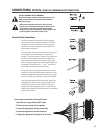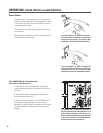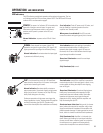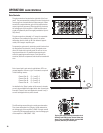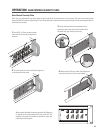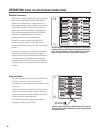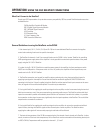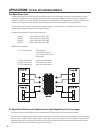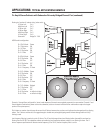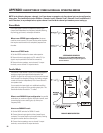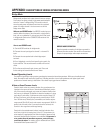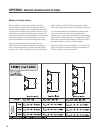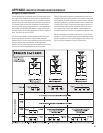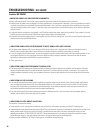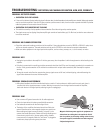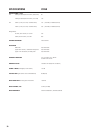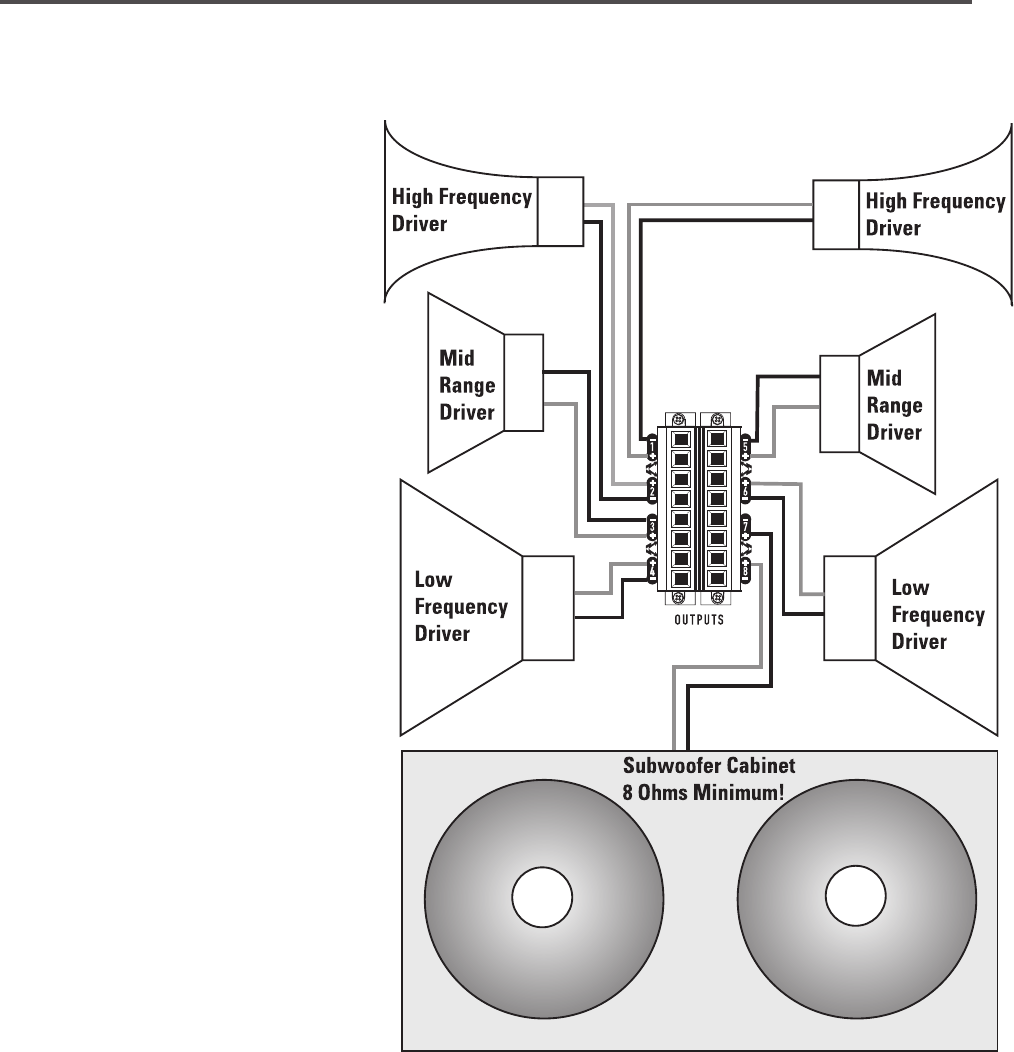
23
APPLICATIONS: TYPICAL APPLICATION EXAMPLES
Tri-Amp’d Stereo Cabinets with Subwoofer Driven by Bridged Channel Pair (continued)
Routing is a function of ‘easiest wiring’ order and is:
LF Driver Left: Ch. 4
Mid Driver Left Ch. 3
HF Driver Left Ch. 2
HF Driver Right Ch. 1
Mid Driver Right Ch. 5
LF Driver Right Ch. 6
Subwoofer Bridge Ch. 7 & 8
MODE switch configuration:
Ch.1/Ch.2 Mode: Stereo
Ch.1 Clip Limiter: ON
Ch.1 LF Filter: OFF
Ch. 2 Clip Limiter ON
Ch. 2 LF filter OFF
Ch.3/Ch.4 Mode: Stereo
Ch. 3 Clip Limiter ON
Ch.3 LF Filter: OFF
Ch. 4 Clip Limiter OFF
Ch. 4 LF filter ON
Ch. 4 LF frequency 70 Hertz
Ch. 5/Ch. 6 Mode: Stereo
Ch. 5 Clip Limiter ON
Ch.5 LF Filter: OFF
Ch. 6 Clip Limiter OFF
Ch. 6 LF filter ON
Ch. 6 LF frequency 70 Hertz
Ch. 7/Ch. 8 Mode Bridged
Ch. 7 Clip Limiter OFF
Ch. 7 LF Filter OFF
Ch. 8 Clip Limiter no effect in bridge
Ch. 8 LF Filter no effect in bridge
Channels 1 through 6 are configured for ‘stereo’ mode because all channels are completely separate from one another. Channels 7 and
8 are bridged to combine their power to drive the subwoofer (sub’s are the most inefficient driver and therefore require the largest
portion of the system power).
Clip limiters are used on the mid range drivers and the HF drivers because they are the most fragile and are damaged easily by clipping
events. The LF drivers and the sub’s are rugged enough to handle even prolonged clipping events without damage and thus no clip
limiting is used.
Low frequency filtering is used only on the LF drivers. The HF and mid range drivers have filtering before the amplifier and need no
filtering from the CX168. The subwoofer cabinet can handle the low frequencies without problem, so no filtering for them. The LF
drivers response specification will dictate at what frequency (33 or 70 Hz.) the low frequency filter is set for.



